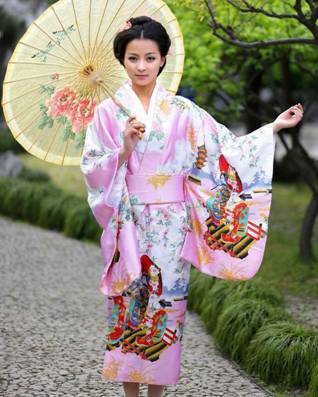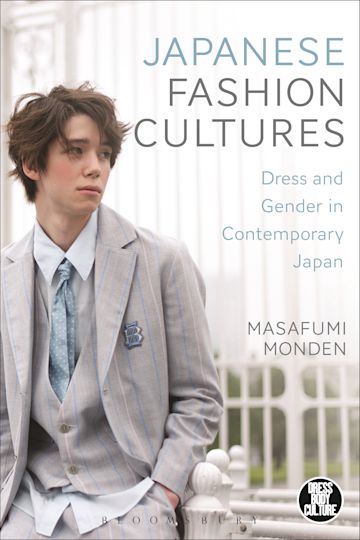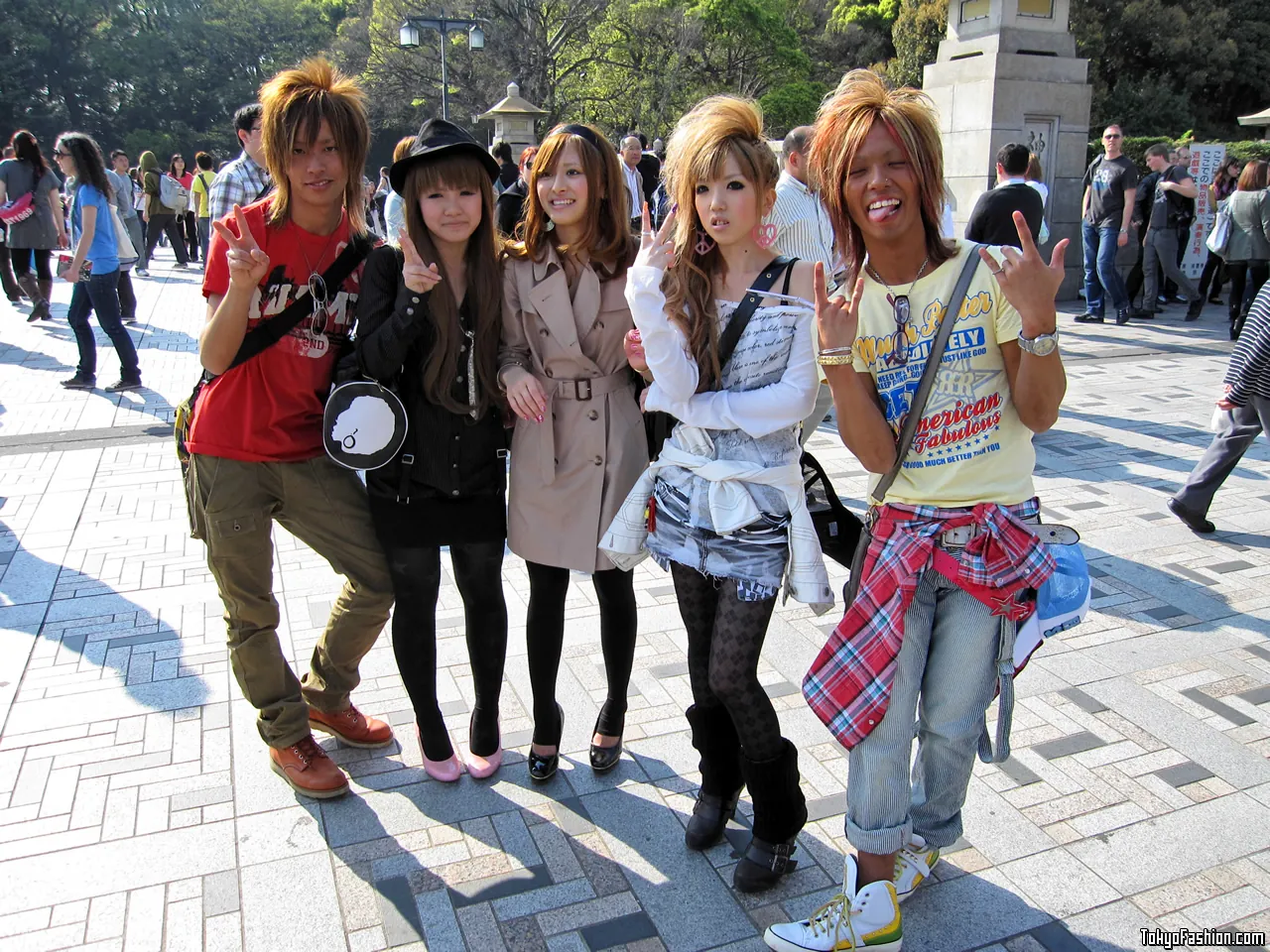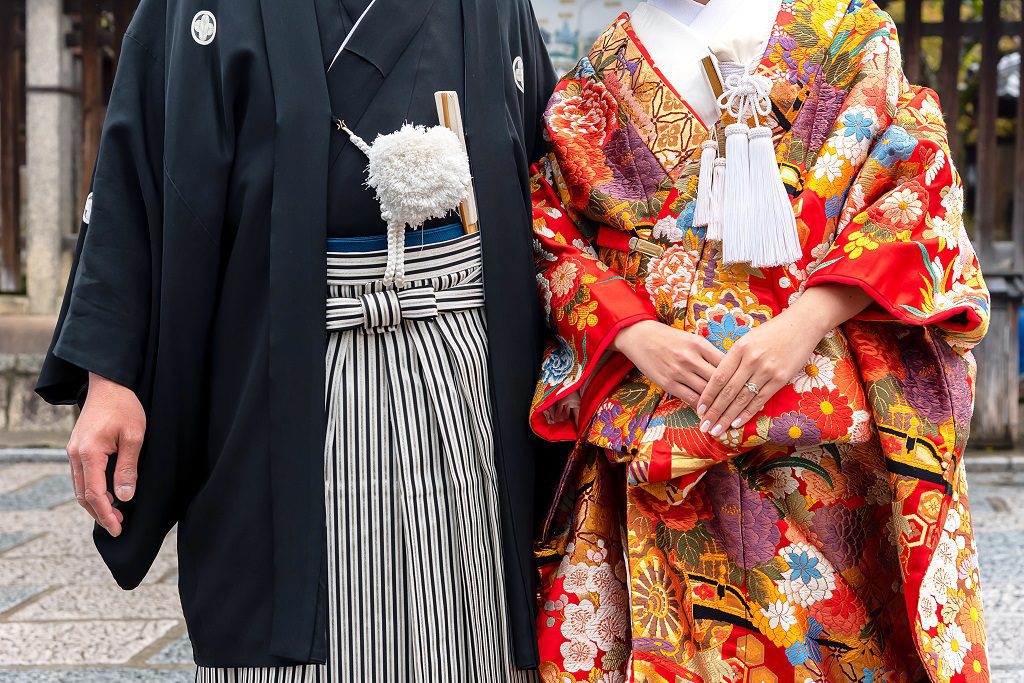Win a Free Trip to Japan!
Experience cherry blossoms and ancient temples
Japanese fashion and culture continue to captivate and influence the global fashion landscape. With a rich heritage rooted in traditional aesthetics, modern design often draws inspiration from the intricate craftsmanship of Japanese textiles. Meanwhile, vibrant street fashion scenes in cities like Tokyo showcase bold expressions and innovative styles that resonate worldwide. As subcultures flourish, they play a pivotal role in shaping contemporary trends. Ultimately, the fusion of Japanese fashion and culture not only sets new standards but also inspires sustainable practices that redefine the future of fashion across the globe.
The influence of traditional Japanese fashion on modern design
Traditional Japanese fashion has significantly influenced modern design, creating a distinctive fusion that showcases elegance and sophistication. This impact can be observed across various sectors, from high fashion to everyday attire. Here are some key elements of this influence:
-
Kimono Silhouettes:
- The structured shape of the kimono offers a unique silhouette adopted by contemporary designers. This influence often appears in collections focusing on layering and wraps.
-
Textiles and Patterns:
- Traditional fabrics such as silk and cotton continue to inspire modern patterns. Prints like Asanoha (hemp leaf) and Seigaiha (blue ocean waves) bring cultural depth to contemporary clothing.
-
Color Harmony:
- The Japanese aesthetic of color, emphasizing subtlety and balance, resonates within modern palettes, encouraging designers to explore softer shades inspired by nature.
-
Minimalism and Simplicity:
- The principles of simplicity and functionality that underpin traditional Japanese wear permeate modern styles, leading to the rise of minimalist fashion in global trends.
| Feature | Traditional Japanese Fashion | Modern Design Influence |
|---|---|---|
| Silhouette | Kimono | Layered, wrap styles |
| Patterns | Asanoha, Seigaiha | Nature-inspired prints |
| Color Palette | Subtle, harmonious | Soft, muted tones |
| Design Philosophy | Simplicity, functionality | Minimalism, versatility |
The blending of Japanese Fashion and Culture with modern design not only honors tradition but also allows for innovation, encouraging global appreciation for this rich heritage.

The Impact of Street Fashion in Cities Like Tokyo
Street fashion in Tokyo serves as a vibrant canvas that showcases the dynamic interplay between Japanese Fashion and Culture. Distinguished by its eclectic styles and bold expressions, Tokyo street fashion has garnered global attention, significantly influencing international trends. Here are some key aspects of this impact:
-
Diversity of Styles: From Harajuku’s colorful and whimsical outfits to Shibuya’s more polished aesthetics, Tokyo street fashion embraces a wide range of subcultures:
- Gyaru: Emphasizes glamour and femininity.
- Lolita: Draws inspiration from Victorian and Rococo styles.
- Visual Kei: Blends fashion with music, characterized by elaborate outfits.
- Cultural Exchange: Tokyo serves as a hub where traditional elements (e.g., kimonos) merge with contemporary trends, inspiring designers worldwide. This fusion of Japanese Fashion and Culture encourages global brands to adopt unique attributes.
- Social Media Influence: Platforms like Instagram amplify street fashion trends beyond Japan’s borders. Influencers from Tokyo dominate these spaces, showcasing their looks and inspiring followers globally.
In summary, Tokyo’s street fashion not only reflects Japanese Fashion and Culture, but also acts as a catalyst for global fashion trends, driving creativity and cross-cultural dialogue. This ongoing exchange ensures that Tokyo remains at the forefront of innovation in the fashion industry.
The Role of Subcultures in Shaping Fashion Trends
Subcultures play a pivotal role in the evolution of Japanese Fashion and Culture, acting as catalysts for innovation and creativity in global fashion. Various subcultures, each with distinct aesthetics and philosophies, have emerged from Japan, influencing trends far beyond its borders.
Key Subcultures and Their Impact:
- Harajuku: Famous for its vibrant street style, Harajuku embodies a youthful spirit, combining high fashion with DIY creativity. This area inspired global brands to embrace bold colors and eclectic combinations.
- Gyaru: Characterized by dramatic hairstyles and makeup, the Gyaru style promotes individuality, impacting beauty standards internationally and showcasing a blend of Western and Japanese influences.
- Lolita: This subculture revives Victorian and Rococo styles, focusing on modesty while adding playful elements. It challenges conventional fashion norms and has encouraged global interest in alternative fashion.
- Visual Kei: Driven by Japanese rock music, Visual Kei emphasizes flamboyant costumes and androgynous aesthetics. The style has inspired international fashion designers to explore gender fluidity.
Comparison of Subculture Influences:
| Subculture | Main Aesthetic | Global Influence |
|---|---|---|
| Harajuku | Eclectic, Colorful | High-fashion collaborations |
| Gyaru | Glamorous, Flashy | New beauty trends and standards |
| Lolita | Vintage, Elegant | Niche markets for alternative fashion |
| Visual Kei | Flamboyant, Androgynous | Challenge to traditional gender norms |
In summary, the interplay between Japanese Fashion and Culture and subcultures reveals a rich tapestry of styles that challenge and redefine global fashion. These innovative movements consistently push boundaries, forging pathways for new trends worldwide.
How Japanese Textiles and Craftsmanship Inspire Global Brands
Japanese Fashion and Culture have long been praised for their unique textiles and exquisite craftsmanship. Today, this admiration goes beyond borders, influencing global brands in substantial ways. The following elements highlight the impact of Japanese textiles and craftsmanship:
- Traditional Techniques: Techniques like shibori (tie-dye) and sashiko (a form of decorative reinforcement stitching) offer unique textures and patterns, significantly influencing modern design.
- Quality over Quantity: The Japanese philosophy of monozukuri emphasizes mastery and precision. Global brands increasingly adopt this ethos by focusing on high-quality materials and craftsmanship, ultimately enhancing their product durability.
-
Innovative Fabrics: Brands are inspired by innovative textiles such as:
Japanese Textile Global Brand Inspiration Kimono silk Used in luxury fashion collections Denim from Okayama High-end streetwear using Japanese denim Kintsugi ceramics Inspiration for furniture design - Sustainability: Many Japanese methods emphasize environmental consciousness, teaching brands to minimize waste and utilize sustainable materials, aligning with the global shift towards eco-friendly practices.
Through these avenues, Japanese Fashion and Culture continues to inspire creativity and innovation across the globe, solidifying Japan’s position at the forefront of textile and craftsmanship trends.

The connection between anime culture and fashion trends worldwide
Anime culture significantly influences global fashion trends, merging vibrant aesthetics with innovative styles. In recent years, designers and brands have actively drawn inspiration from popular anime series and characters, showcasing the undeniable link between Japanese fashion and culture.
Key Elements of Influence:
- Character Design: Iconic characters often showcase unique clothing styles, inspiring fans to emulate their looks. For example, Sailor Moon spurred a rise in magical girl fashion, emphasizing vibrant colors and playful silhouettes.
- Cosplay: This phenomenon transcends being merely a hobby; it has evolved into a fashion statement. Many people incorporate cosplay elements into their daily attire, bridging the gap between fandom and everyday style.
- Streetwear: Anime influences streetwear trends, as seen in collaborations between fashion brands and anime franchises. Major labels now feature anime graphics and silhouettes, appealing to a younger demographic.
Comparison of Anime-Inspired Trends:
| Trend | Influence | Examples |
|---|---|---|
| Character Aesthetics | Unique styles from protagonists | Attack on Titan jackets |
| Cosplay | Blending fantasy and reality | Everyday outfits with themed elements |
| Streetwear | Hip-hop culture meets anime | Limited edition sneaker drops |
In summary, the fusion of Japanese fashion and culture with anime ignites creativity within the fashion industry, continually shaping contemporary styles and trends worldwide. This powerful connection highlights how deeply intertwined entertainment and fashion truly are, influencing what consumers wear and aspire to embody.
The Significance of Minimalist Aesthetics in Japanese Design
Minimalist aesthetics play a pivotal role in Japanese fashion and culture, emphasizing simplicity, functionality, and beauty. This approach has garnered global admiration and has significantly influenced design ethos worldwide.
Key Characteristics of Minimalist Aesthetics
- Clean Lines: Japanese design often features straight, uncluttered lines that create a sense of harmony and order.
- Neutral Color Palettes: Soft whites, greys, and earthy tones dominate, promoting a serene atmosphere.
- Quality over Quantity: A focus on high-quality materials ensures durability, enhancing the garment’s longevity.
Influence on Global Trends
The minimalist aesthetic rooted in Japanese fashion and culture reverberates through various international apparel lines. This influence manifests in:
| Aspect | Japanese Design | Global Design Trends |
|---|---|---|
| Color | Neutral tones | Earthy and pastel colors |
| Style | Simple silhouettes | Streamlined, functional wear |
| Fabric | Natural materials | Sustainable fabric choices |
This table shows how minimalist aesthetics from Japan promote a universal appreciation for simplicity while pushing the boundaries of creativity in global fashion.
Furthermore, by adopting minimalist approaches, designers worldwide create pieces that emphasize elegance and timelessness, resonating with consumers seeking sustainability and authenticity in their wardrobes. As Japanese fashion and culture continue to inspire, the essence of minimalism remains a vital influence on contemporary design trends.
Seasonal Fashion Trends in Japan and Their Global Adoption
Japanese Fashion and Culture showcase a remarkable connection to the changing seasons, deeply influencing not only local styles but also inspiring global trends. Each season in Japan brings distinct fashion aesthetics, driven by climate, cultural traditions, and celebrations. Here’s a closer look at how Japan’s seasonal trends have left their mark internationally:
Spring (Sakura Season)
- Trends: Pastel colors, floral prints, lightweight fabrics.
- Global Adoption: Spring collections worldwide often feature similar hues and patterns, capturing the essence of cherry blossoms.
Summer (Matsuri Festivals)
- Trends: Bright colors, airy kimono-inspired garments, and vibrant yukatas.
- Global Adoption: Summer fashion in Western markets increasingly reflects these bold choices, especially in festival wear.
Autumn (Koyo Season)
- Trends: Layering, rich earth tones, and cozy fabric—a nod to the changing leaves.
- Global Adoption: Western brands embrace layering techniques, mirroring Japan’s sophisticated yet functional styles.
Winter (Shimekazari)
- Trends: Textured materials, deep colors, and traditional patterns, incorporating warmth and elegance.
- Global Adoption: Luxury brands adopt similar textiles and design elements, emphasizing comfort and style.
Japanese Fashion and Culture not only celebrate seasonal transitions but also serve as a source of inspiration for fashion designers around the globe. This harmonic blend of tradition and modernity creates a rich tapestry of styles that resonate worldwide, reflecting both localized heritage and universal appeal.

The impact of Japanese fashion weeks on international runways
Japanese fashion weeks are pivotal in showcasing the unique blend of tradition and innovation inherent in Japanese Fashion and Culture. Tokyo Fashion Week, in particular, stands out as a platform where local designers present their exceptional talent and creativity, influencing global fashion trends.
Here’s how Japanese fashion weeks impact international runways:
- Diverse Design Concepts: Japanese designers often challenge conventional aesthetics. For instance, the avant-garde styles you see on Tokyo’s runways inspire labels worldwide. Many international designers now incorporate bold, experimental silhouettes that reflect this influence.
- Emphasis on Craftsmanship: Japanese craftsmanship elevates fashion quality and detail, encouraging global brands to adopt similar values. This meticulous attention to detail is evident in many collections worldwide, as brands strive to match the standards set by their Japanese counterparts.
- Cultural Fusion: Designers seamlessly blend traditional elements with modern designs. For example, kimonos inspire many collections, leading to a resurgence of cultural appreciation in the global fashion industry.
- Innovation and Sustainability: Japanese fashion weeks emphasize sustainable practices, encouraging international brands to think critically about their production methods. This shift towards eco-friendly practices is a direct reflection of Japanese Fashion and Culture.
In conclusion, Japanese fashion weeks significantly shape the direction of global fashion through their daring approaches, meticulous craftsmanship, and commitment to sustainability, ensuring that the essence of Japanese Fashion and Culture resonates far beyond its borders.
Sustainable Fashion Practices Emerging from Japan
Japan’s commitment to sustainable fashion practices has become increasingly influential in the global arena. As a nation with a rich cultural heritage, Japanese Fashion and Culture intertwine sustainability with traditional values, leading to innovative practices. Here are some key approaches:
- Slow Fashion Movement: Japan emphasizes quality over quantity, encouraging consumers to invest in durable, handcrafted pieces. This approach reduces waste and promotes a stronger connection to clothing.
- Natural Dyes: Many Japanese designers utilize natural dyeing techniques, such as indigo (aoma), which not only adds aesthetic depth but also lessens environmental impact compared to synthetic dyes.
- Recycling Traditions: The practice of kintsugi, or mending broken pottery with gold, inspires fashion designers to repair rather than discard garments, thus promoting a circular economy.
- Upcycling: Designers like Marine Serre incorporate upcycled materials and textiles, transforming old pieces into modern, trendy outfits. This not only showcases creativity but also reduces textile waste.
| Practice | Description | Environmental Impact |
|---|---|---|
| Slow Fashion | Focus on quality, handmade pieces | Reduces fast fashion waste |
| Natural Dyes | Use of plant-based dyes | Lower pollution |
| Recycling | Mending and repurposing clothes | Minimizes landfill contributions |
| Upcycling | Redesigning old garments for new trends | Reduces textile waste |
In conclusion, Japanese Fashion and Culture pave the way for sustainable practices that resonate across the globe, encouraging a more mindful approach to fashion consumption.
The future of Japanese fashion and its potential trends on the global stage
Japanese Fashion and Culture continue to evolve, and their future holds exciting possibilities. As we look ahead, several key trends and influences are likely to define the trajectory of Japanese fashion on the global stage.
Key Trends to Watch
- Sustainability: With an increasing awareness of environmental issues, Japanese designers are focusing on sustainable practices. Expect to see innovations in eco-friendly textiles and processes.
- Technology Integration: The blend of fashion and technology, such as smart textiles and wearable tech, showcases Japan’s knack for merging aesthetics with functionality.
- Cultural Hybridization: As Japan increasingly interacts with global influencers, the assimilation of diverse styles will create unique hybrid fashions that reflect both Japanese roots and international elements.
Forecasted Influences
- Streetwear Evolution: Tokyo’s street fashion remains a strong influence. Global brands are likely to incorporate bold patterns and layering techniques that originated in urban Japan.
- Minimalism: The minimalist aesthetic inherent in Japanese design will continue to resonate worldwide, championing simplicity and functionality in wardrobe choices.
- Anime Influence: The popularity of anime and manga will likely further permeate fashion, leading to more playful designs and character-inspired collections.
In summary, the future of Japanese Fashion and Culture promises an exciting blend of sustainability, technology, and cultural fusion, all set to influence global trends profoundly.
Frequently Asked Questions
What is the influence of Japanese fashion on global trends?
Japanese fashion holds a unique and significant influence on global trends, characterized by its avant-garde designs, cultural heritage, and street style. Designers such as Yohji Yamamoto and Issey Miyake have introduced innovative silhouettes and textiles that challenge conventional fashion norms. The eclectic nature of Japanese street fashion allows for a fusion of styles that inspires designers worldwide, making it a pivotal reference point in contemporary fashion discussions.
How does traditional Japanese culture impact modern fashion?
Traditional Japanese culture greatly impacts modern fashion through its aesthetics, craftsmanship, and textile techniques. For instance, the use of kimonos, obi sashes, and indigo dyeing can be seen in contemporary designs. The principles of wa (harmony) and wabi-sabi (beauty in imperfection) resonate in the delicate yet bold choices made by designers, encouraging a blend of heritage with modernity, thus enriching the global fashion landscape.
What role does street style play in Japanese fashion culture?
Street style plays a crucial role in Japanese fashion culture, particularly in urban areas like Harajuku and Shibuya, where individuality and creativity are celebrated. This vibrant scene showcases a mix of influences ranging from traditional garments to high fashion, creating a dynamic fashion narrative. Streetwear from Japan often emphasizes exclusivity and uniqueness, driving global trends as international fashion enthusiasts look to these streets for inspiration and new ideas.
How is Japanese fashion received in Western markets?
Japanese fashion is generally received with admiration and intrigue in Western markets, often viewed as a source of creativity and innovation. Collaborations between Japanese designers and major Western brands help introduce these unique styles to a broader audience. However, the distinctiveness of some traditional elements can pose challenges for mass appeal; yet, the growing trend towards diversity and individuality in fashion makes Japanese influences increasingly popular among Western consumers.
What are some notable Japanese fashion brands that have made a global impact?
Several Japanese fashion brands have made substantial global impacts, including Comme des Garçons, Junya Watanabe, and Issey Miyake. These brands are revered for their experimental designs and commitment to craftsmanship, pushing the boundaries of conventional fashion. Their innovative use of fabric, technology, and form captures the attention of both critics and consumers, establishing a strong presence in the global fashion industry and influencing countless designers across the world.
